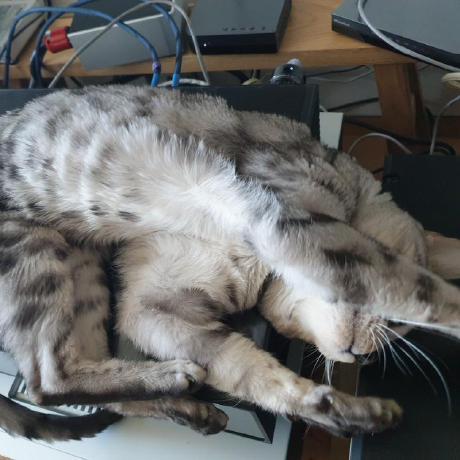Discover and explore top open-source AI tools and projects—updated daily.
Lora-for-Diffusers by  haofanwang
haofanwang
Tutorial for using LoRA within the Diffusers framework
Top 43.2% on SourcePulse
This repository provides a simplified tutorial and conversion scripts for integrating LoRA (Low-Rank Adaptation) models into the Hugging Face diffusers framework, targeting AI generation researchers and developers. It aims to make using LoRA weights, commonly found in .safetensors format from communities like Civitai, straightforward within diffusers for custom model fine-tuning and inference.
How It Works
The project addresses the incompatibility of .safetensors LoRA weights with the diffusers library by providing custom Python scripts. These scripts extract LoRA weights from .safetensors files and directly merge them into the diffusers compatible base model's UNet attention layers. This approach avoids full model conversion, offering a lightweight method to apply LoRA adaptations. The training section leverages diffusers' train_text_to_image_lora.py script, demonstrating efficient fine-tuning with minimal parameters.
Quick Start & Requirements
- Install
safetensors:pip install safetensors - Requires Python and PyTorch.
- GPU with CUDA is recommended for training and inference.
- Official
diffuserslibrary is a core dependency. - Links: Hugging Face Diffusers, Civitai
Highlighted Details
- Simplifies loading
.safetensorsLoRA weights intodiffusers. - Provides scripts for converting full
.ckptor.safetensorsmodels todiffusersformat. - Includes example code for training LoRA models using
accelerateanddiffusers. - Demonstrates using LoRA weights with
StableDiffusionPipelinefor inference.
Maintenance & Community
- The project has submitted Pull Requests to the main
diffuserslibrary for improved LoRA integration. - Active development is indicated by ongoing PRs and support for related techniques like ControlNet.
Licensing & Compatibility
- The repository itself appears to be under a permissive license, but it relies heavily on the
diffuserslibrary and models from Hugging Face and Civitai, which have their own licensing terms. Users must ensure compatibility with the specific models and licenses they use.
Limitations & Caveats
- The script's compatibility with all
.safetensorsfiles is not guaranteed due to potential variations in naming conventions or inclusion of LoRA weights for modules beyond UNet's attention layers (e.g., text encoders). - Support for LoRA weights targeting the text encoder is noted as pending.
- Mixing multiple LoRA models is possible but requires careful management of weights to avoid model degradation.
1 year ago
Inactive

 lovisdotio
lovisdotio JamesQFreeman
JamesQFreeman changjonathanc
changjonathanc mkshing
mkshing sail-sg
sail-sg maszhongming
maszhongming NVlabs
NVlabs kohya-ss
kohya-ss cloneofsimo
cloneofsimo ostris
ostris